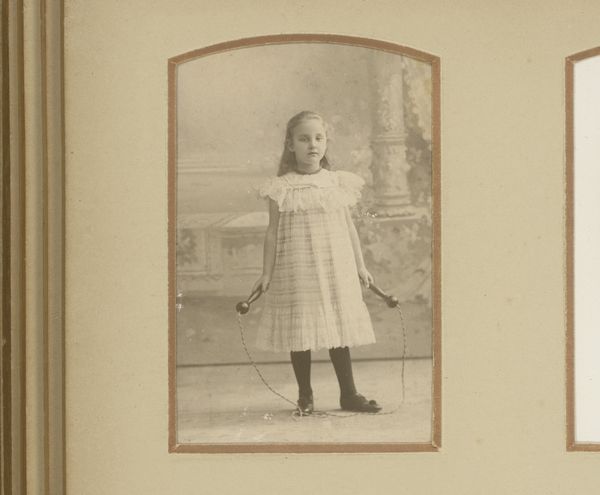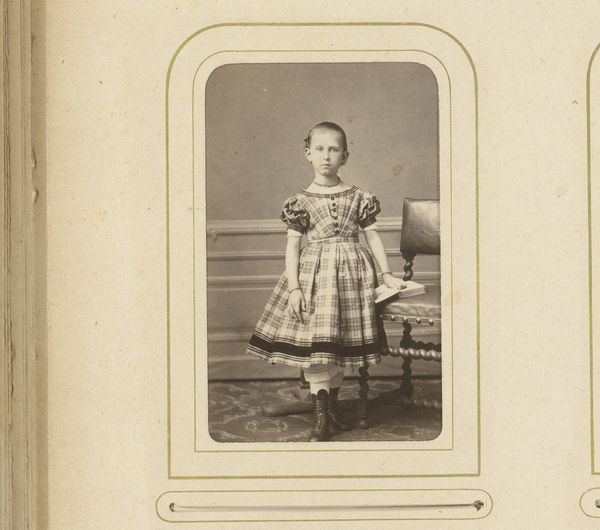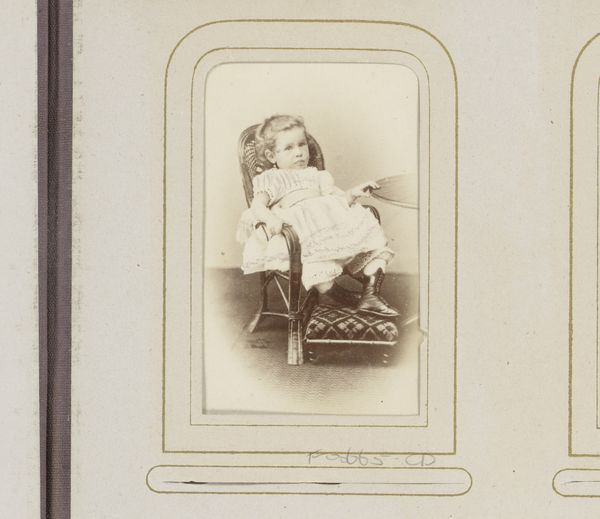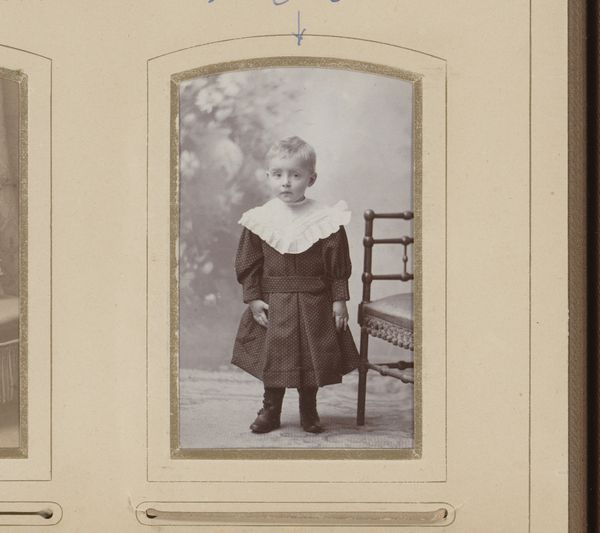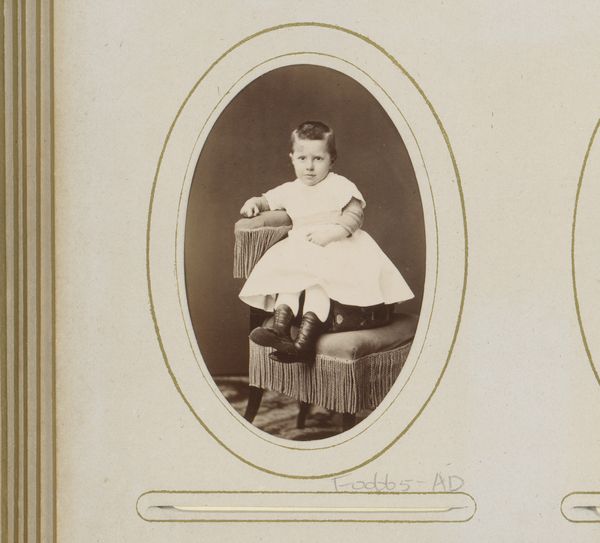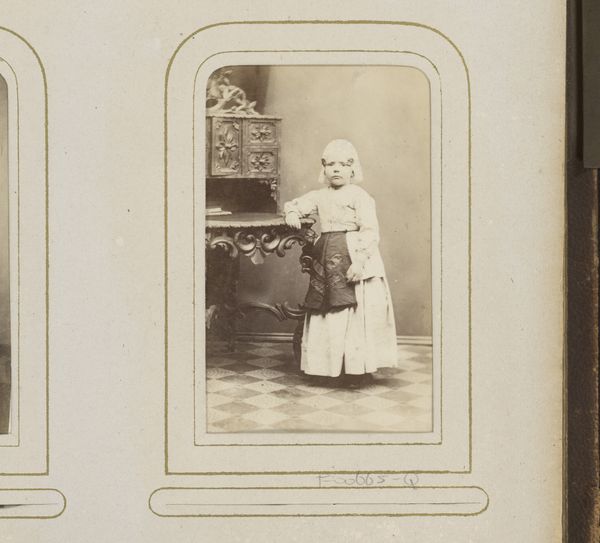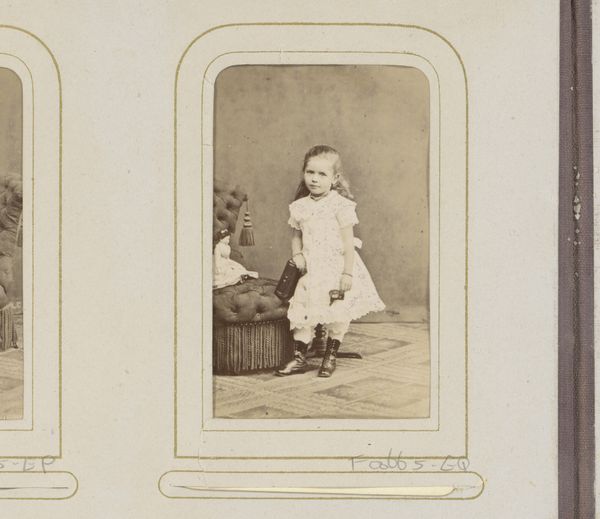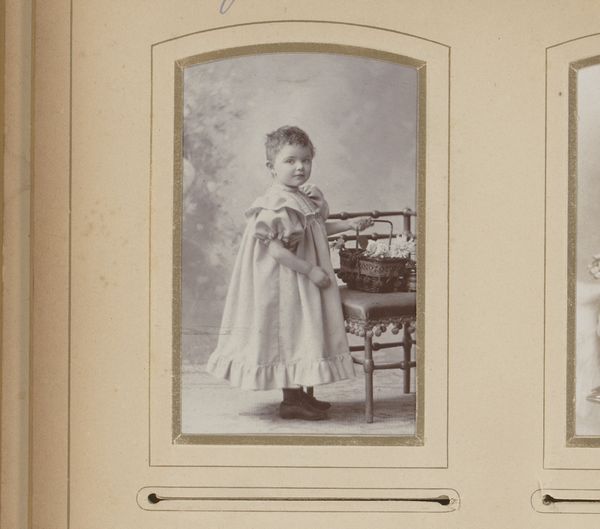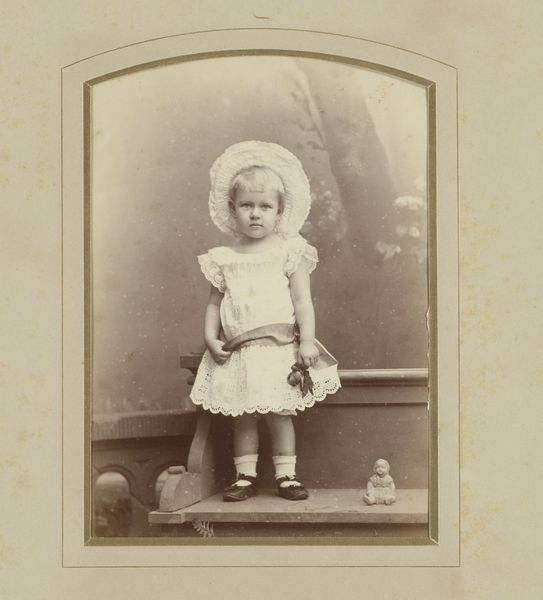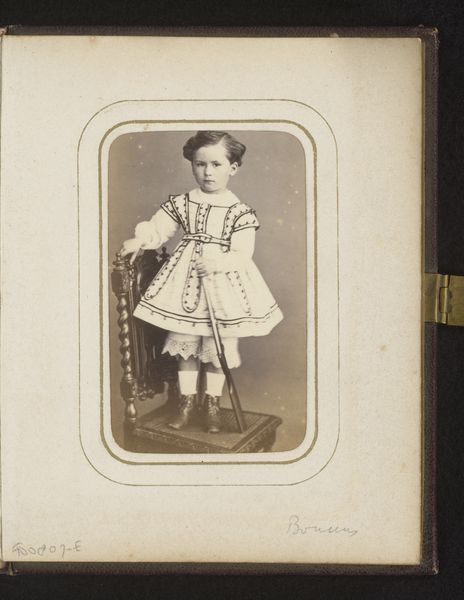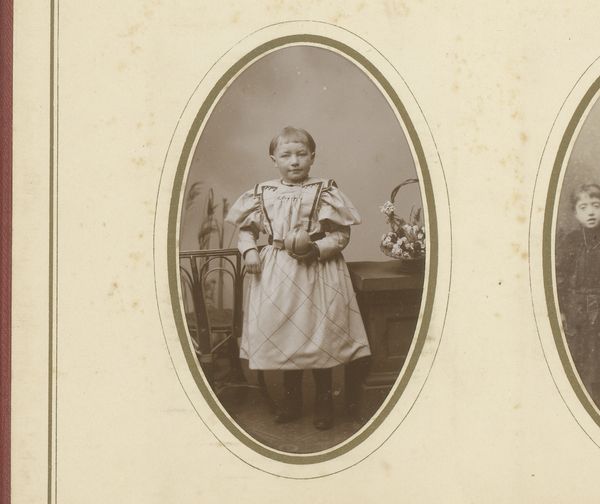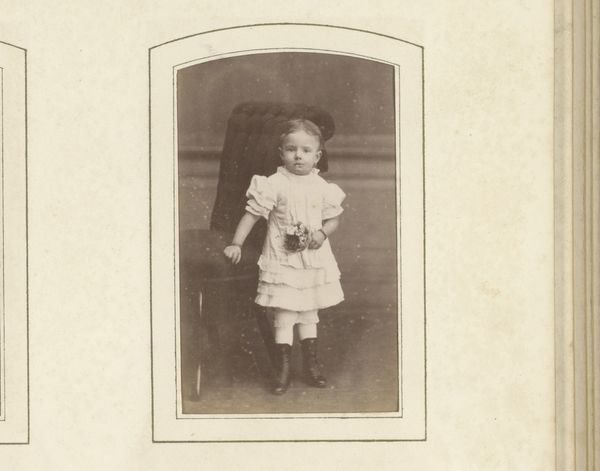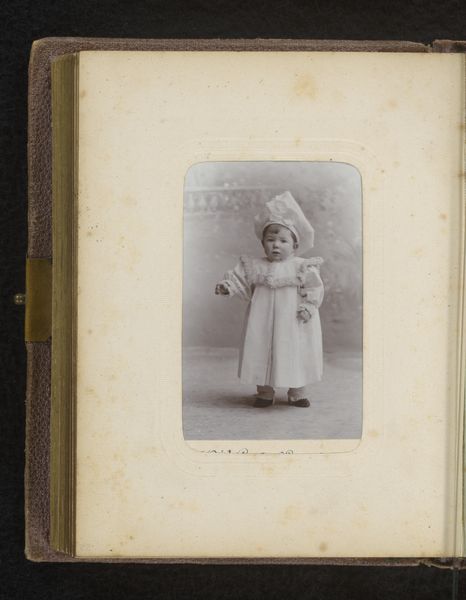
Portret van een staand meisje met pop in de hand 1892 - 1906
0:00
0:00
machielhendricusladde
Rijksmuseum
photography
#
portrait
#
photo element
#
figuration
#
photography
Dimensions: height 84 mm, width 51 mm
Copyright: Rijks Museum: Open Domain
Curator: Looking at this piece by Machiel Hendricus Laddé, circa 1892-1906, titled "Portret van een staand meisje met pop in de hand," one is struck by its formal composition. It’s a photographic portrait, held in the collection of the Rijksmuseum. Editor: There's an austerity about it, don't you think? The subdued tones and the girl's serious expression, it evokes a Victorian somberness, but in a Dutch context. There’s an almost haunting stillness despite its simplicity. Curator: Precisely. Consider the symbolism of the doll, an object that mirrors girlhood, representing innocence, but also, potentially, a future role as mother and caregiver. Editor: And the backdrop...a contrived studio "nature" that serves to confine rather than liberate. Look at how stiffly she holds the doll; her own identity is perhaps as constructed and curated as the staged environment she stands within. What does that signify? Curator: These portraits were often intended to project status, or convey virtues and ideals valued at the time, and it's difficult to resist interpreting how symbols reflect her particular status, class expectations, and societal values projected onto her as a young woman in the making. It makes me wonder what this photograph means within that system of meanings. Editor: I think you're absolutely right. Looking through the lens of today, it’s a powerful statement on gender roles—how young women were positioned, and how those expectations and social boundaries get expressed and enforced by these static image-objects. Curator: I am drawn to how photography froze moments in time and imprinted specific sets of images of young women to reinforce the norms that would last over a lifetime. Editor: Yes. And that’s why revisiting them critically allows us to understand how those imprints are still felt today. Curator: Examining this piece through an anthropological lens helps appreciate how images carry social, historical, and psychological layers. Editor: And considering its role within the socio-political framework allows us to deconstruct the image and empower ourselves with understanding.
Comments
No comments
Be the first to comment and join the conversation on the ultimate creative platform.
